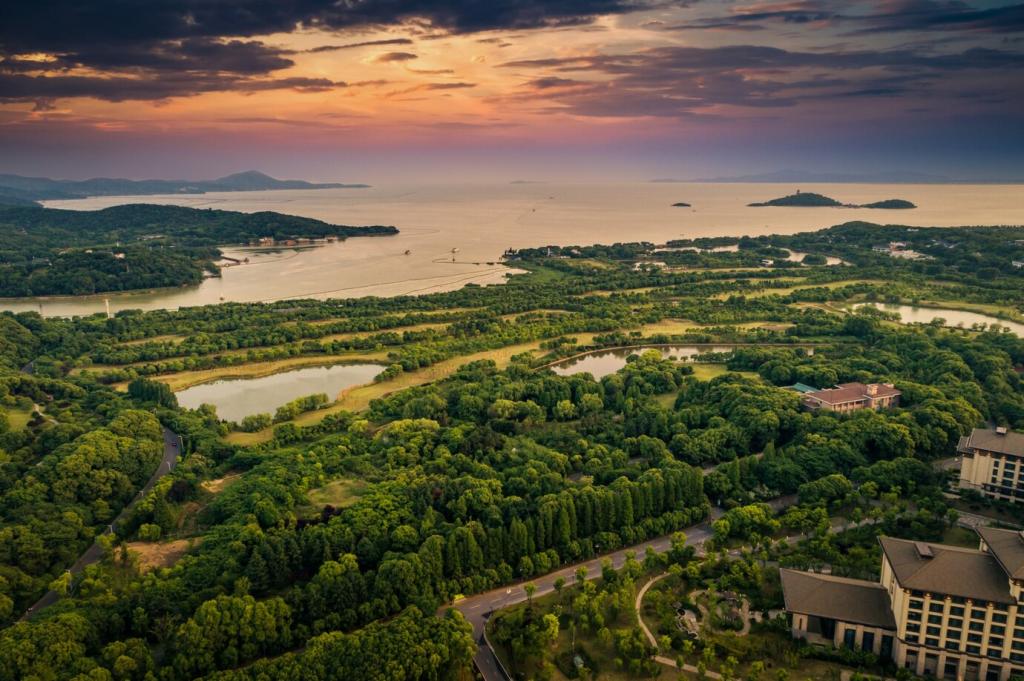Tourism has long been considered a key driver in regional economic development, but its impact goes far beyond job creation and business growth. One of the most significant yet often overlooked ways tourism changes a region is through its influence on real estate demand. As more visitors flock to a destination, both the local property market and investor interest can shift dramatically. This page explores the dynamic relationship between tourism activity and the real estate sector, highlighting how booming visitor numbers spark new opportunities, challenges, and long-term transformations in property demand and development.
From Visitor to Homebuyer: The Tourist Conversion
Many property transactions originate from people who initially arrived as tourists. Spending time immersed in a locale allows travelers to visualize a life beyond vacation, leading them to consider long-term investment or even relocation. Whether it’s the charm of a coastal town or the vibrancy of a cultural hotspot, positive experiences can plant the seed of property interest. As the tourism industry grows, so does the pool of potential buyers, particularly those seeking second homes, retirement properties, or lifestyle changes influenced by their travel encounters. This direct pipeline from tourist to real estate purchaser helps explain why popular destinations often see property prices surge as their popularity rises.
Short-Term Rentals and the Rise of Investment Properties
The surge in short-term rental platforms has radically changed the real estate landscape in tourist-heavy regions. Property owners now see attractive opportunities in hosting visitors, resulting in increased demand for condos, apartments, and houses suitable for rental purposes. Investors are drawn to the potential for high returns during peak tourist seasons, leading to a shift in property buying patterns. In some cases, the quest for lucrative short-term rental income intensifies competition for homes, making it more difficult for locals to enter the market. The symbiotic relationship between tourism and short-term rentals is reshaping neighborhood dynamics, occupancy patterns, and investment priorities across many destinations.
Destination Branding and Real Estate Value
The marketing power behind a successful tourism campaign can extend far beyond attracting hotel guests. When a location is effectively branded as a must-visit destination, real estate values often follow suit. Strong tourism branding enhances a location’s profile, instilling a sense of lifestyle allure and prestige that translates into higher demand for property ownership. Prospective buyers are influenced not only by the intrinsic qualities of a place but also by its perceived status as a thriving, desirable, and “in demand” location. Over time, destination branding contributes to rising property valuations and can even spark new residential developments specifically designed to meet the expectations of a discerning, travel-savvy clientele.

Infrastructure Improvements and Their Impact on Property Demand
Tourism-driven demand encourages significant investments in infrastructure, from upgraded airports and transit systems to improved roads, utilities, and public services. These enhancements not only improve the visitor experience but also boost the overall quality of life for residents. Infrastructure upgrades often make formerly remote or inaccessible areas viable for residential and commercial development, unlocking new swathes of land for real estate projects. As services and connectivity increase, so does the appeal for homebuyers and investors, resulting in a wave of new property demand closely tied to the rhythm of ongoing tourism growth.
Job Creation and Urban Expansion
The tourism sector generates substantial employment opportunities, drawing people from neighboring regions in search of work. This demographic shift can drive urban expansion, as growing populations seek housing, services, and amenities near employment centers. Increased job availability boosts purchasing power, leading to rising demand for affordable, mid-range, and high-end properties alike. The jobs created in hospitality, transport, and ancillary industries contribute to economic stability, further encouraging real estate development. Over time, the need for workforce accommodation can lead to the construction of new residential neighborhoods, transforming the urban landscape while responding to both local and investor-driven demand.
Revitalization of Underdeveloped Areas
Tourism’s allure often casts a spotlight on neglected or underdeveloped districts, prompting revitalization efforts that make these areas attractive for real estate investment. Local governments may launch beautification projects, upgrade infrastructure, and provide incentives for developers to breathe new life into forgotten neighborhoods. As new attractions, hotels, and amenities take root, perceptions shift and real estate demand follows suit. Formerly overlooked zones can rapidly become trending markets, offering opportunities for first-movers and helping distribute the benefits of tourism across a broader geographic footprint. This process of revitalization driven by tourism often leaves a lasting legacy in the form of rejuvenated communities and buoyant property markets.
Seasonal Dynamics and Market Fluctuations
High Season Booms: Real Estate Peaks and Opportunities
During peak tourist seasons, the surge in visitors can create intense, short-term demand for accommodation, both commercial and residential. This influx often drives up rental rates, occupancy levels, and the appeal of investment properties designed to capitalize on seasonal income. Sellers may list properties during these booms to take advantage of elevated prices, while buyers race to secure assets that can generate substantial returns. Developers and investors closely monitor these seasonal upticks, timing their moves to coincide with periods of heightened demand. These periodic booms can set new market benchmarks and have a lasting influence on property values in the most popular areas.
Off-Season Lulls and Buyer Advantages
The flip side of peak periods is the often quieter off-season, when tourist numbers dwindle and demand for accommodation falls. Property prices may stabilize or even dip during these times, presenting opportunities for savvy buyers and long-term investors. Lower rental occupancy rates can motivate owners to sell or offer discounts, making it easier for locals and newcomers to enter the market. Construction activity may shift to the off-season, reducing disruption and taking advantage of lower costs. For those willing to look past short-term fluctuations, the off-season represents a window to secure property before the next upswing, with potential for appreciable long-term gains as tourism rebounds.
The Role of Festivals, Events, and Special Attractions
Tourism demand isn’t solely dictated by weather—the timing and success of major events, festivals, and temporary attractions can cause sudden, dramatic spikes in real estate demand. Cities that host internationally renowned gatherings or unique seasonal festivities often experience a surge in visitors who seek short-term rentals, purchase vacation homes, or even invest in local developments. These special occasions can prompt rapid changes in occupancy rates, rental prices, and transaction volumes that temporarily reshape the market landscape. While these effects may ebb once the event concludes, repeated or recurring attractions can cement a destination’s reputation and set the stage for longer-term real estate demand and growth.
